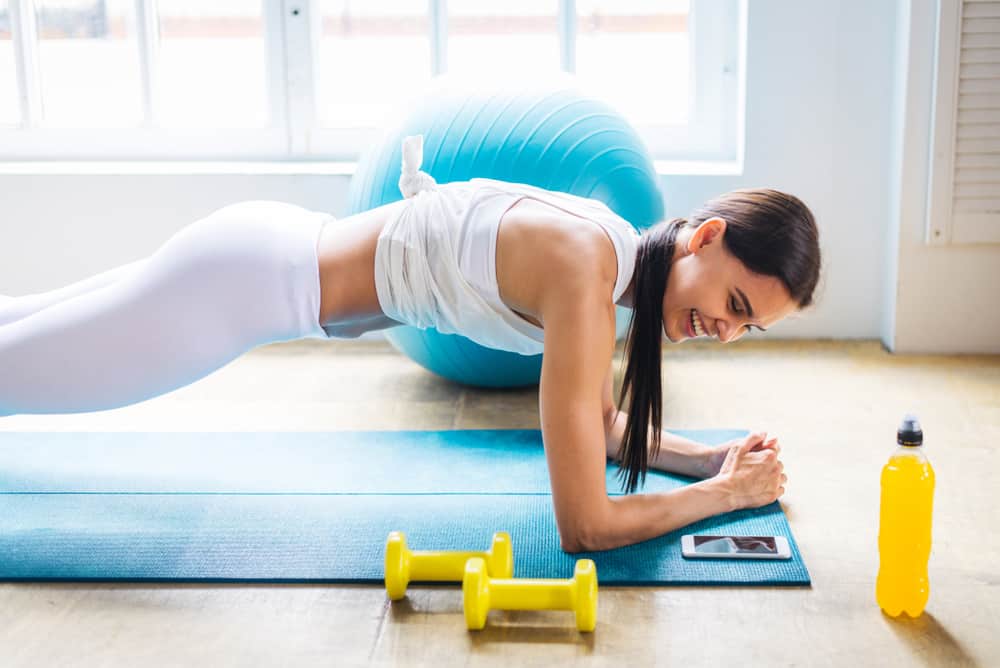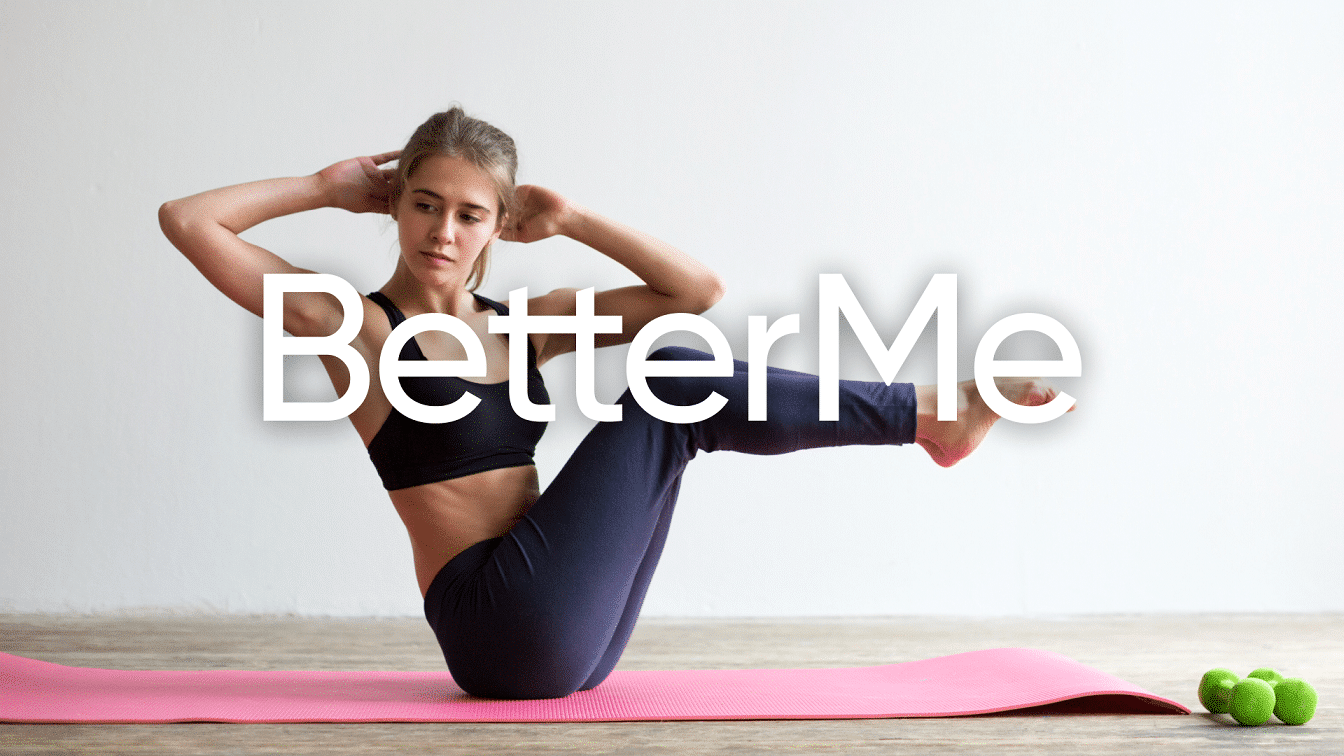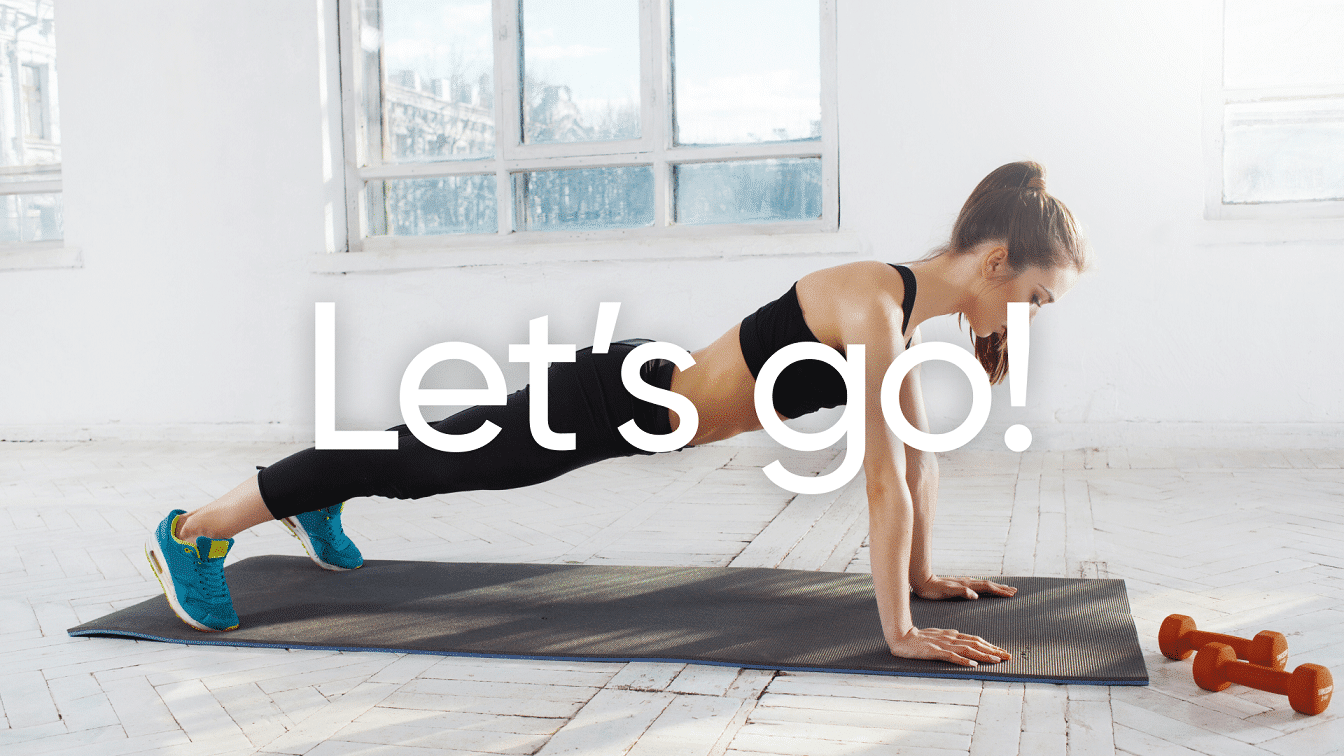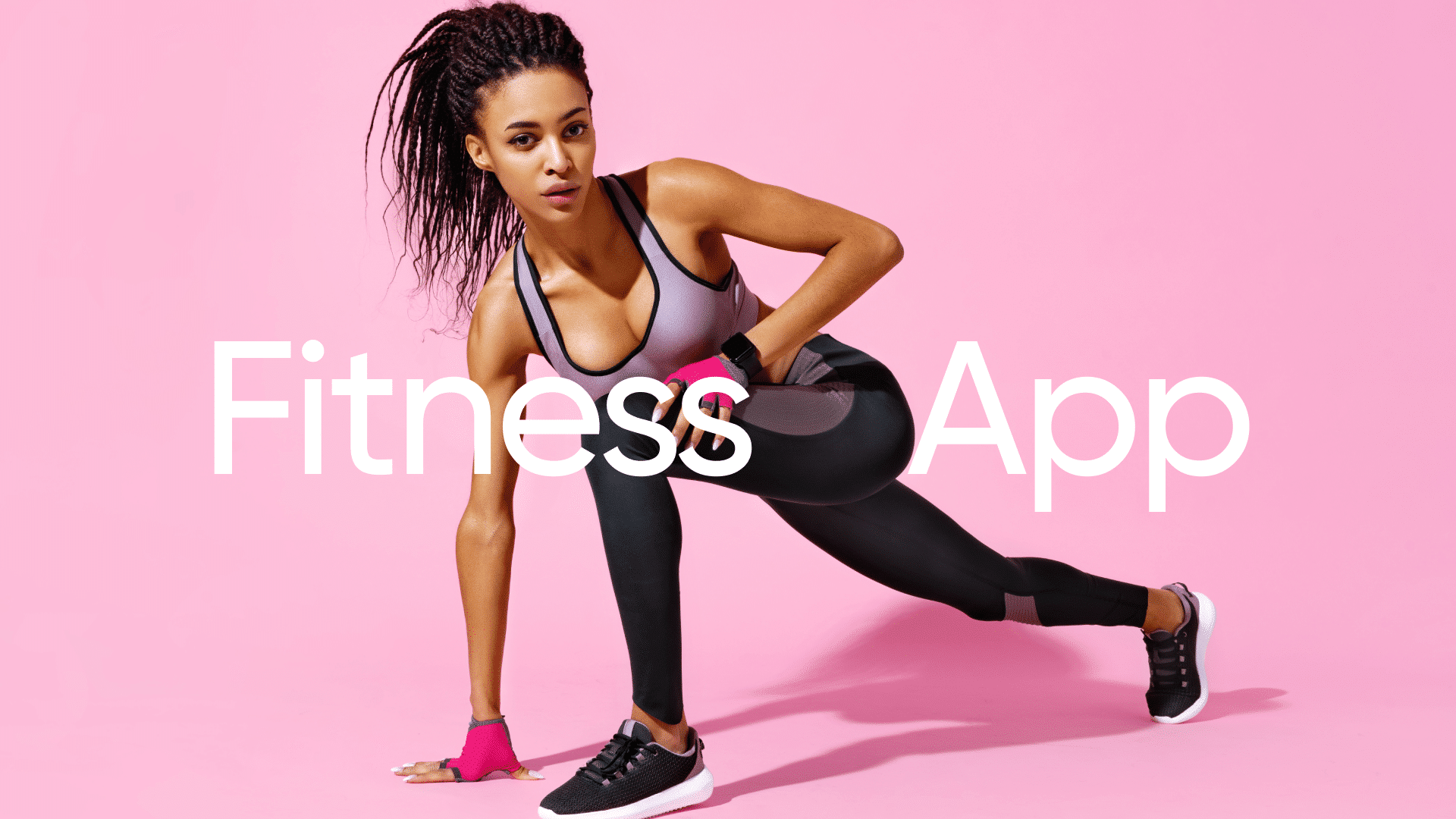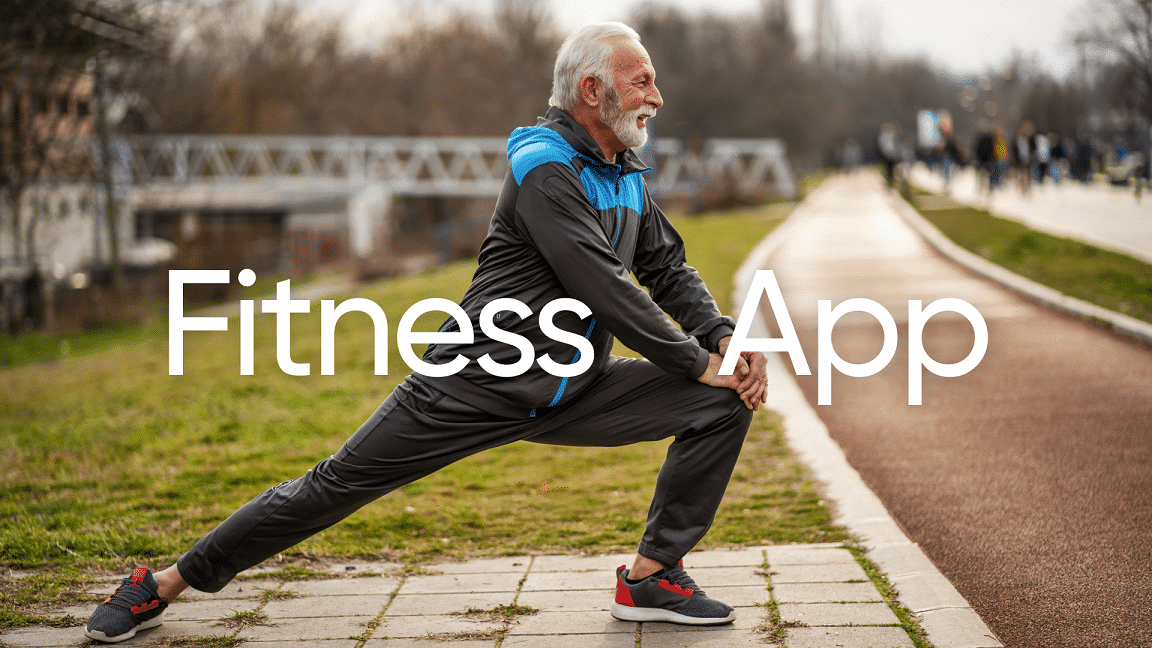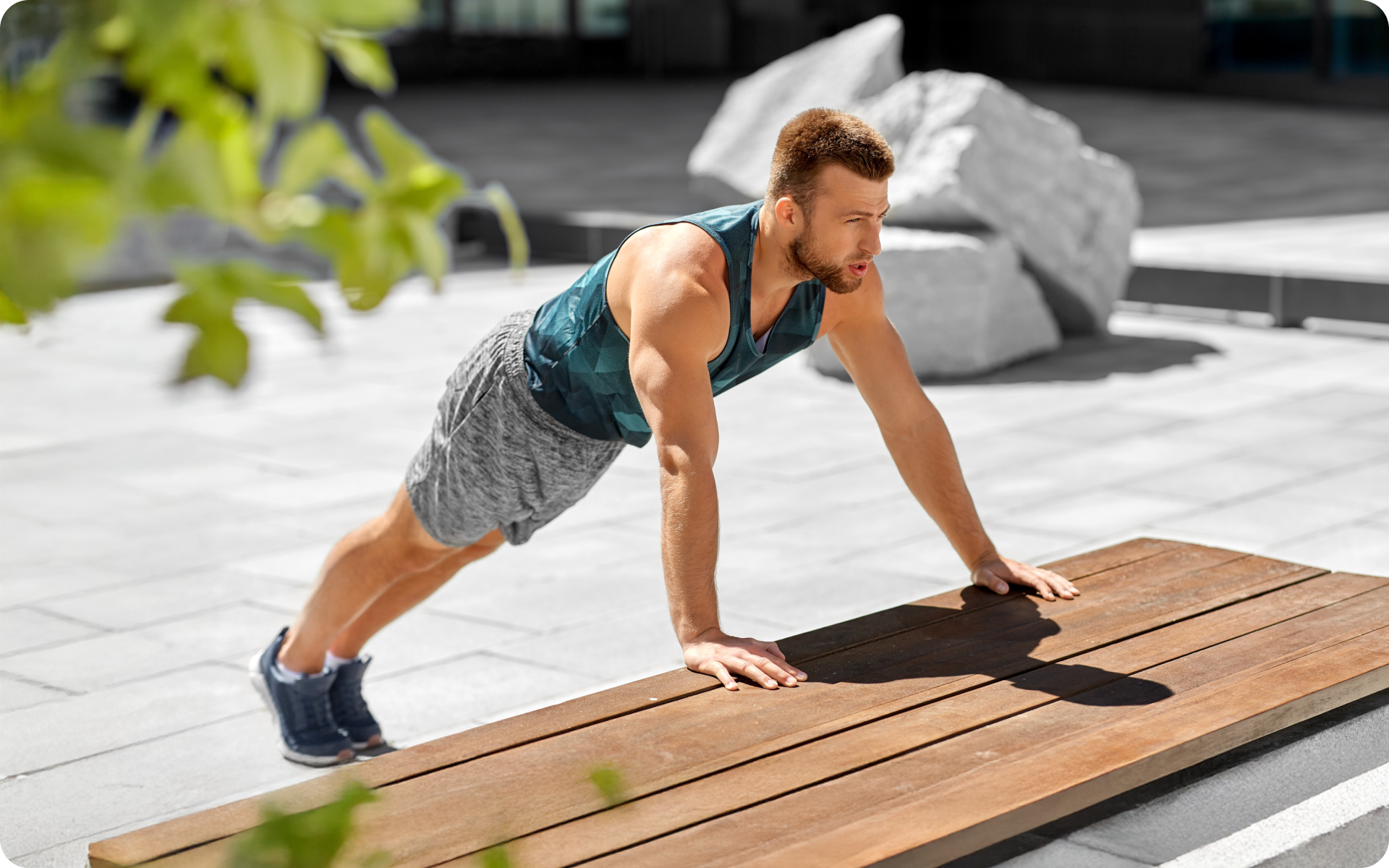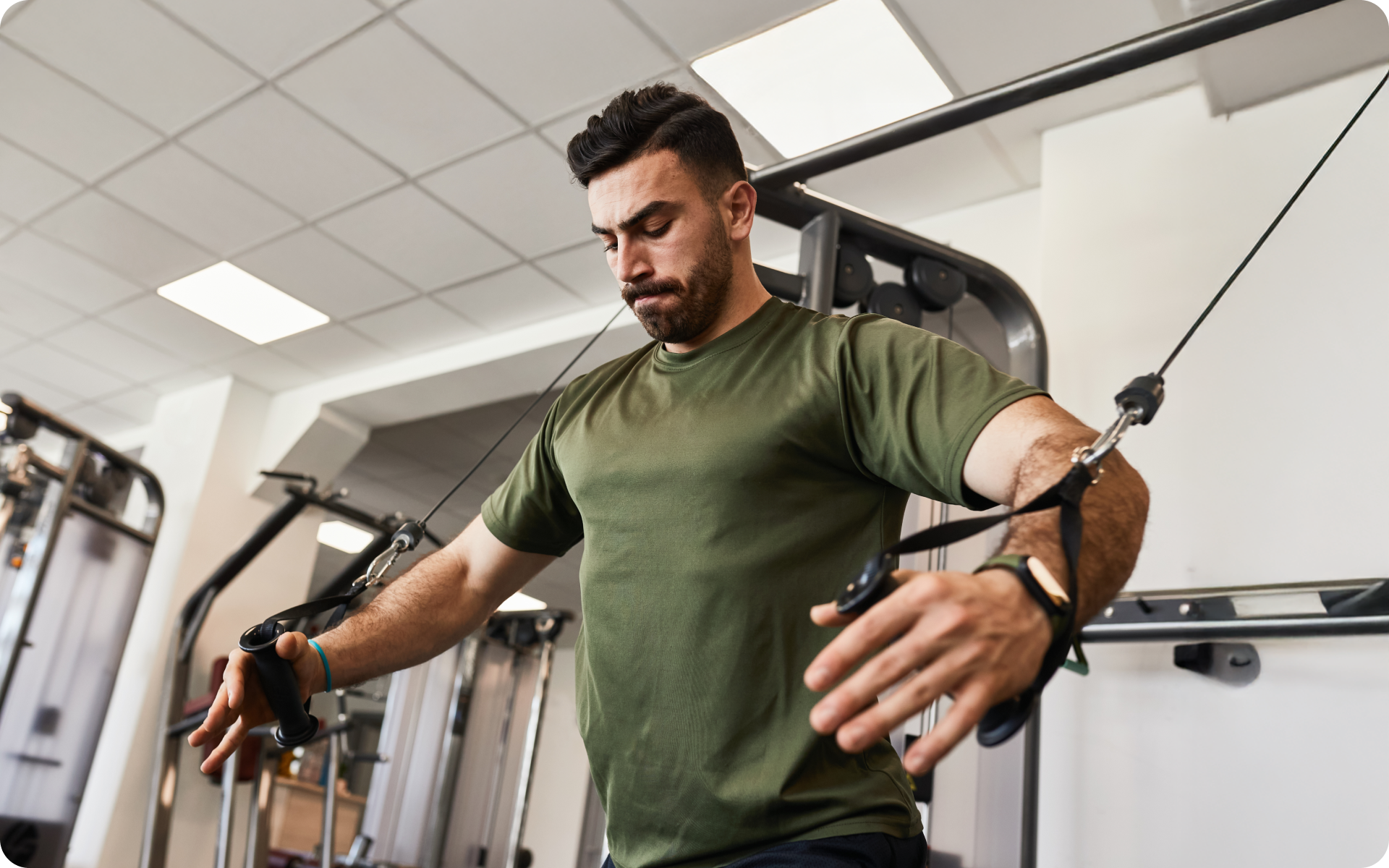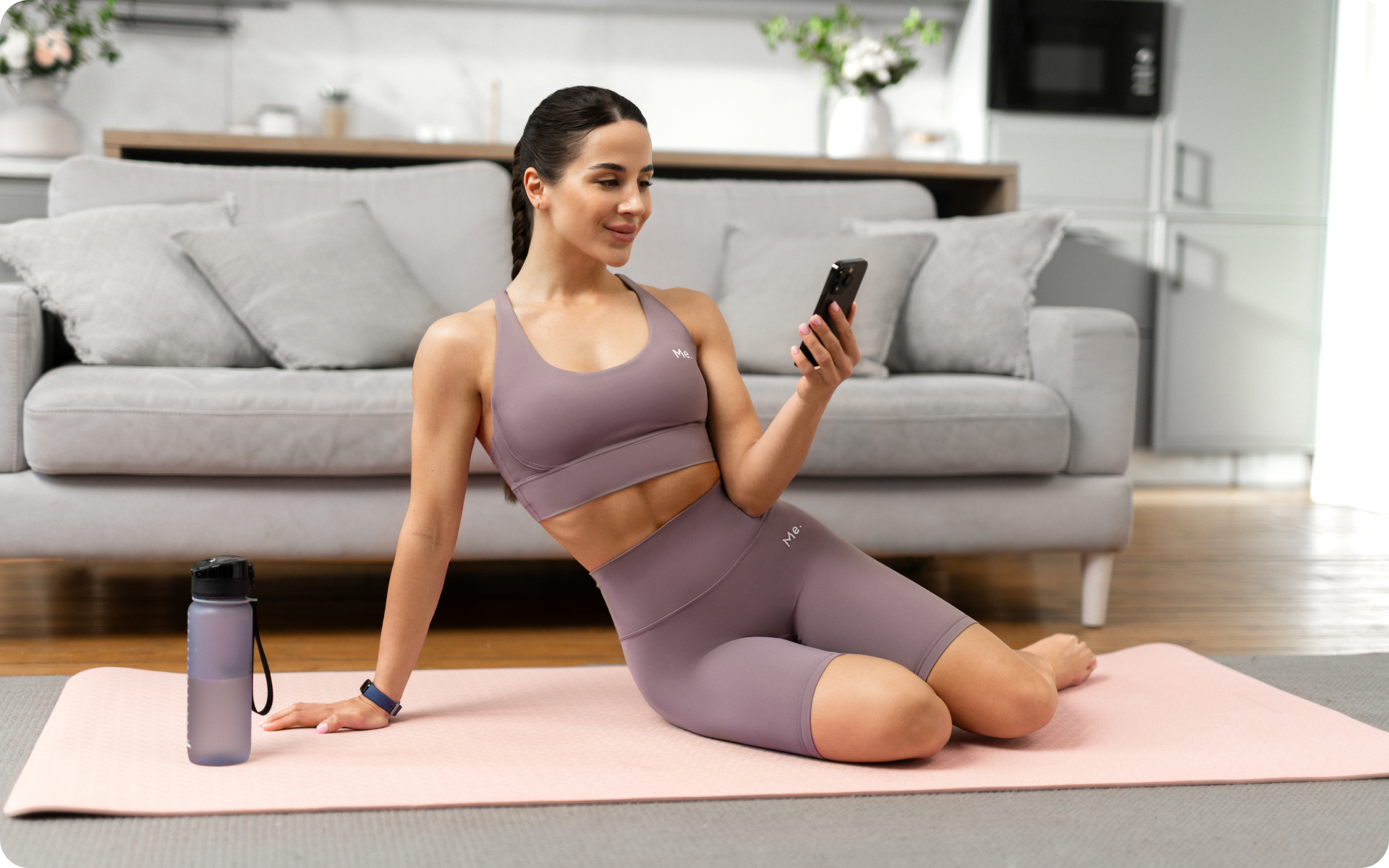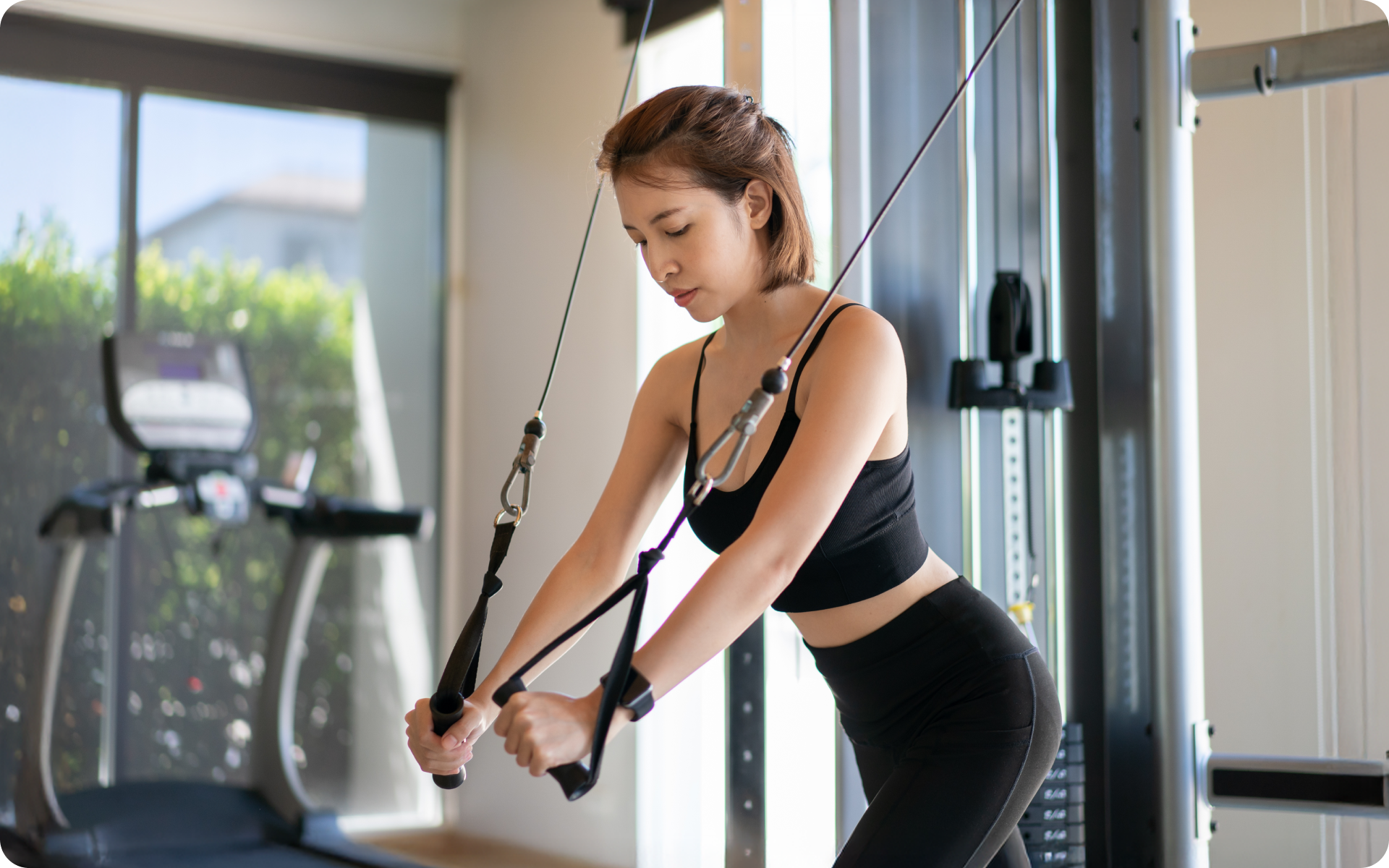“How many days a week should you work out?” This is a question that many people who are looking to get into fitness for weight loss or overall health purposes find themselves asking. It is because different people have different routines. Some could be at the gym from Sunday to Sunday, others go for five days, while others are okay with just two days a week, it can be hard to figure out how many days a week you should work out to lose weight or build muscle.
Get your personalized
meal plan!

In this article, we are going to delve into this matter to try and determine different common questions such as “Is it good to work out every day?”, “How many days a week should you work out to make progress?”, “How many days a week should you work out for intermittent fasting?”, and “How much cardio per week?”, and more.
How Many Days A Week Should You Work Out For Weight Loss?
Before determining how many days a week should you work out for weight loss, it is best to, first, determine how much weight you need to lose and how much you can safely lose within a week or a month. Many of us start exercising to lose the most amount of weight in the shortest time frame possible.
This is unhealthy and quite dangerous. According to the CDC, safe, healthy, and sustainable weight loss means losing no more than one to two pounds a week (17). It is also important to remember that weight loss cannot be sustained by exercising alone, you must consume a well-balanced diet and ensure that you are eating on a calorie deficit of 500 to 1000 calories a day (9). This means consuming no less than 1200 calories per day for women and 1500 calories a day for men (6).
So, if you have fixed your eating habits and reduced your energy intake, then how many days a week should you work out to make progress and achieve your goals? This depends on how well you are used to working out. A beginner cannot workout as frequently or even using the same intensity as someone who has been working out for years.
For beginners, it is advisable to start slow and pace yourself. Try working out for at least two to three days a week to eventually work out for four to five days a week (14).
What about if you are not a beginner? How many days a week should you work out as an intermediate or advanced gym-goer? Intermediates should try working out three to four times a week, while advanced people should not exercise for more than five days a week (14).
Read More: How Often Should I Workout Abs To Avoid Sabotaging My Six-Pack Goals?
How Long Should You Work Out, And For How Many Days A Week?
Now that you have figured out the answer to “how many days a week should you work out to make progress”, how long should your workout be? According to the American College of Sports Medicine (ACSM), if you are looking to improve your health, and are overweight or obese, then you should attempt to get in a minimum of 150 minutes (30 minutes in five days) of moderate-intensity aerobic activity per week.
However, for long-term weight loss, this number goes up to 200 to 300 minutes a week (40 to 60 minutes a day) (4). It is further recommended that if you would prefer more intense workouts (and are fit enough to do them), you can do 75 minutes per week of vigorous aerobic activity (15 minutes a day for five days or 25 minutes a day for three days). These workouts can be separated or combined depending on your strength levels and what your body is capable of.
Examples of moderate-intensity aerobic activities include brisk walking (at least 2.5 miles per hour), water aerobics, slow or social dancing, gardening, and biking slower than ten miles per hour. On the other hand, vigorous aerobic activities include running, hiking uphill, jumping rope, or swimming laps (1).
Remember that exercising is not just for people who are overweight or obese. Healthy people at a healthy weight should also work out because it improves their health by reducing their risk of cardiovascular diseases, type 2 diabetes, metabolic syndrome, and some cancers like bladder, breast, lung, kidney, and colon cancer (5).
How Much Cardio Per Week?
Cardio exercises are some rhythmic activities that raise your heart rate into a specific target heart rate zone, which helps you burn the most fat and calories. The most popular cardio workouts that are beginner-friendly include jumping jacks, jump rope, kickboxing, jogging, swimming, and running up the stairs.
So, how much cardio per week for weight loss? It is suggested that you should try and do 30 to 45 minutes of cardio workouts for three to five days a week; three days of moderate-intensity cardio exercise and two days of vigorous cardio workouts (15).
However, you must keep in mind that if you are a beginner, then you absolutely must pace yourself or risk injury. A study was done in 1977 on male jail and prison inmates showed that participants who jogged for 45 minutes a day for five days a week experienced more injuries than those who did the same but for one or three days for 15 minutes and 30 minutes, consecutively (10).
Lean and toned up body isn’t just a far-fetched fantasy. Check out the BetterMe app and watch it propel your weight loss journey into high gear!
How Many Days A Week Should You Work Out For Bodybuilding?
Say that you are at a healthy weight but would like to build some muscle definition and bulk up, how many days a week should you work out?
A training frequency of muscle groups for the biggest and best gains is something that remains to be a heated topic of discussion in the fitness community. Some suggest that for bigger gains, you should train a single muscle group about once a week, while others suggest that this should be done twice a week (12).
Irrespective of the argument, we suggest that for maximum gains, you should not work out for more than four days a week (16). According to Men’sHealth, about ten studies have revealed that the best muscle growth is experienced when each muscle group is exercised twice a week (13).
We suggest that you split your upper and lower body training sessions by two days each. I.e., Monday and Tuesday = Lower body workouts, Wednesday = Rest day, and Thursday and Friday = Upper body exercises. You could also alternate the days, i.e.:
- Monday – Upper body
- Tuesday – Lower body
- Wednesday -Rest day
- Thursday and Friday – Repeat Monday and Tuesday’s exercises, respectively.
How Often Should I Lift Weights?
As seen above, sometimes less is more. You should not lift weights more than four times a week, and you should rest at least once between the two days. According to the HHS-U.S. Department of Health and Human Services, you should work out all your major muscle groups (chest, back, arms and shoulders, abs, and legs) at least twice a day (3). Depending on your goals, do:
- 4 to 6 reps to increase muscle size
- 8 to 12 reps for muscle strength
- 10 to 15 reps for muscle endurance (2)
How Many Days A Week Should You Work Out So Your Muscles Don’t Shrink?
Sticking to working out for up to five days a week or strength training two to four days is enough not to make your muscles shrink. Taking a much-deserved rest day will also not lead to muscle breakdown. You are only at risk of losing muscle strength if you take a break from exercising for three to four weeks. Anything less than that is safe for your muscle strength and cardio fitness (11).
How Many Days A Week Should You Work Out For Intermittent Fasting?
You may still be able to work out while you are intermittent fasting as long as you plan your workouts and make sure that your sessions are after you have broken your fast. However, even with your desire to work out, you may experience side effects, such as poor performance, inability to build muscle, lightheadedness, and fainting (8).
In light of this, we would suggest that you stick to low-intensity-aerobic workouts while fasting. For those hoping to preserve their muscle mass, you are advised to limit your lifting to two times a week (18).
Read More: Workouts At Home For Men: Bringing The Gym To Your Living Room
Workout Routine For Fat Loss And Bodybuilding
Now that you have a better understanding of how many days a week should you work out for body fat loss and weight gain, here are some simple workouts that you can do at home or the gym:
1. Full-Body Workouts For Weight Loss
Cardio workouts are all full-body workouts, and they will all help you burn calories to lose weight and fat. Here are some common cardio workouts and how much calories they can burn in 30 minutes on a 155-pound person (7):
- Cycling moderately (stationary bike) – 260 calories
- Ballroom dancing – 112 calories
- Walking at 3.5 miles per hour – 149 calories
- Cross country hiking – 223 calories
- General swimming – 223 calories
- Running at five mph – 298 calories
- Jumping rope – 372 calories
Other workouts that you can do include:
They work out both your upper and lower body targeting the muscles in your legs, hips, buttocks, abdomen, arms, chest, and shoulders.
- Start in a standing position with your feet shoulder-width apart.
- Squat down with your back straight and your hands on the floor between your feet.
- With your weight on your hands, kick your feet back so you’re on your hands and toes, and in a pushup position.
- Do one push-up before jumping your feet back to their starting position.
- Push strongly from this position and jump, reaching your arms over your head.
Beginners can omit the push-up entirely or do it on their knees. You could also not jump and stretch your hands in the air instead.
-
Push-Ups
They workout the muscles in your chest, shoulders, core, triceps, and serratus anterior (muscles under your armpits).
- Get on the floor on all fours, positioning your hands slightly wider than your shoulders.
- Extend your legs back so that you are balanced on your hands and toes. Keep your body in a straight line from head to toe without sagging in the middle or arching your back.
- Contract your abs and tighten your core by pulling your belly button toward your spine. Keep a tight core throughout the entire push-up.
- Inhale as you slowly bend your elbows and lower yourself until your elbows are at a 90-degree angle.
- Exhale as you begin contracting your chest muscles and pushing back up through your hands to the start position. Don’t lock out the elbows; keep them slightly bent.
-
Mountain Climbers
These are a full-body workout that works out the muscles in your core, glutes, legs, triceps, and shoulders. Here is how to do them:
- Begin in a traditional plank position with your shoulders directly over your hands and wrists.
- Be sure to keep your back flat and your butt down, maintaining a neutral spine; do not curve your back or sag your hips.
- Engage your core and lift your right knee, bringing it toward your elbow (or as far as you can). Return the right knee to the starting position as you simultaneously drive your left knee up toward your left elbow.
- Return to the starting position and continue switching legs as you pick up the pace. It should feel like you are running in place in a plank position.
- Set a timer and do this continuously for 30 seconds to a minute.
-
Medicine Ball Slams
They engage the muscles in your core, shoulders, triceps, back, glutes, hamstrings, and quads.
- Stand tall with your feet roughly shoulder-width apart, your knees and hips slightly bent, holding a medicine ball in both hands at your torso.
- Engage your core and squat down slightly. In one motion, inhale and press through your heels before rising on the balls of your feet.
- Extend your knees and hips as you rise to power the upward swing of your arms and lift the medicine ball overhead.
- Use your core and your arms to slam the medicine ball straight down between your feet with as much force as you can. Press your hips back and bend your knees to further power the slam. Exhale as you do this.
- Squat down to pick up the ball, then immediately move into the next slam by powerfully using your calves, quads, hamstrings, and glutes to stand. Come up on the balls of your feet again as you lift the medicine ball overhead.
- Repeat this eight to 12 times for one set.
2. Lower Body Workouts
Please note that these exercises can be done with or without weights. If you would like to use weights but cannot afford them, improvise by using water bottles, soup cans, or a full backpack.
They target your leg muscles as well as the muscles in your core, hips, and glutes.
- Stand with your feet roughly hip-distance apart. Keep your torso upright and tall, core engaged, your shoulders back and chin lifted, and look straight ahead.
- Take a wide step forward with your right foot and plant it roughly two feet ahead, allowing your left heel to lift naturally as you step forward. You may want to put your hands on your hips, and elbows bent at a 90-degree angle as you take each step.
- Keeping your core engaged and upright, breathe in and bend both knees, lowering your back knee toward the floor. Stop just before it touches down.
- Breath out as you press firmly through your right heel, and extend the right knee to rise as you lift your left foot from the ground, swinging it forward to plant it about two feet ahead of your right foot. Avoid leaning your torso forward from your hips as you take this step.
- Continue stepping forward with each lunge, alternating sides as you do. Set a timer for yourself and try doing this for five to ten minutes
- Finish your set by bringing your back foot to meet your front foot on the final lunge.
-
Pistol Squats
A more advanced version of the ordinary squat, they target the muscles in your calves, hamstrings, quads, hips, and glutes.
- Begin by standing with your feet together and parallel, about shoulder-width apart.
- Extend one leg in front of you, as straight as you can, with your heel hovering off the floor. Raise your arms straight out in front of you.
- Keeping your core tight and spine straight, bend your standing leg and lower your body, extending your other leg in front of you. Keep the foot of your standing leg flat on the floor.
- Continue to bend through your standing knee as far as you can while aiming to get your extended leg parallel to the floor. Straighten your standing leg to return upright, keeping your extended leg straight.
- Do this eight to 12 times on one leg and then switch sides.
Beginners should not try going all the way down to the floor. Instead, they should attempt doing this in front of a chair, couch, or a wall to use it for balance.
-
Glute Bridges
- Lie on your back with your hands at your sides, knees bent, and feet flat on the floor under your knees.
- Tighten your abdominal and buttock muscles by pushing your lower back into the ground before you push up.
- Raise your hips to create a straight line from your knees to shoulders.
- Squeeze your core and pull your belly button back toward your spine.
- Hold for five to ten seconds, and then return to your starting position.
- Try doing this ten to 15 times for one set.
Looking for a way to break the vicious cycle of weight loss and tone up all the jiggly parts? Watch the extra pounds fly off and your muscles firm up with the BetterMe app!
-
Step-Ups
These are a fantastic lower body workout as they target your calves, quads, glutes, and hamstrings.
- Stand in front of a step or box holding dumbbells in your hands or a barbell across your shoulders. You can skip the weights altogether and use your bodyweight or household items such as soup cans or water bottles if you do not have any gym equipment.
- Step up with the right foot, pressing through the heel to straighten your right leg. Bring the left foot to meet your right foot on top of the step.
- Bend your right knee and step down with the left foot. Bring the right foot down to meet the left foot on the ground.
- Repeat this up to 12 times and then lead with the left foot and repeat the same number of routines.
3. Upper Body Workouts
-
Bicep Curls
- Stand holding a dumbbell in each hand with your arms hanging by your sides.
- Ensure your elbows are close to your torso and your palms facing forward.
- Keeping your upper arms stationary, exhale as you curl the weights up to shoulder level while contracting your biceps.
- Hold the weight at shoulder height for a brief pause, then inhale as you slowly lower back to the start position.
- Do this 15 to 20 times.
-
Bench Press
This workout targets the muscles in your chest, triceps, and shoulders.
- Lie on your back on a flat bench and grip a barbell with your hands slightly wider than shoulder-width.
- Press your feet firmly into the ground and keep your hips on the bench throughout the entire movement.
- Slowly lift the bar off the rack, if using, and lower the bar to the chest, allowing elbows to bend out to the side.
- Stop lowering when elbows are just below the bench. Press feet into the floor as you push the bar back up to return to the starting position.
- Perform five to ten reps, depending on the weight used. Perform up to three sets.
-
Overhead Press
This exercise works out the pectorals, deltoids, triceps, trapezius, and core.
- Stand upright and keep the back straight.
- Hold a dumbbell in each hand at the shoulders with an overhand grip. Thumbs should be on the inside and knuckles facing up.
- Raise the weights above the head in a controlled motion while exhaling. Pause at the top of the motion.
- Return the dumbbells to the shoulders while inhaling.
- Repeat this eight to 12 times.
DISCLAIMER:
This article is intended for general informational purposes only and does not address individual circumstances. It is not a substitute for professional advice or help and should not be relied on to make decisions of any kind. A licensed physician should be consulted for diagnosis and treatment of any medical conditions. Any action you take upon the information presented in this article is strictly at your own risk and responsibility!
SOURCES:
- American Heart Association Recommendations for Physical Activity in Adults and Kids (2018, heart.org)
- An Overview of Weight Training (2020, verywellfit.com)
- Appendix 1. Physical Activity Guidelines for Americans (2015, health.gov)
- Appropriate Physical Activity Intervention Strategies for Weight Loss and Prevention of Weight Regain for Adults (2009, journals.lww.com)
- Benefits of Physical Activity (2020 cdc.gov)
- Calorie counting made easy (n.d., health.harvard.edu)
- Calories burned in 30 minutes for people of three different weights (2018, health.harvard.edu)
- Can you workout while doing an intermittent fast? (2020, medicalnewstoday.com)
- Counting calories: Get back to weight-loss basics (2020, mayoclinic.org)
- Effects of frequency and duration of training on attrition and incidence of injury (1977, pubmed.ncbi.nlm.nih.gov)
- Exercise Break: How Long Does It Take to Lose Muscle Mass? (2018, healthline.com)
- How Many Days a Week Should I Work Out to Build Huge Muscles? (2019, livestrong.com)
- How Often Do You Need to Work Out To Build Muscle? (2019, menshealth.com)
- How Often Should You Work Out? (2020, healthline.com)
- How to Lose Weight with Cardiovascular Exercise (2019, healthline.com)
- Overtrain If You Don’t Want To Gain! (2019, bodybuilding.com)
- What is healthy weight loss? (2020, cdc.gov)
- What to Know About Intermittent Fasting and Your Workouts (2019, menshealth.com)
